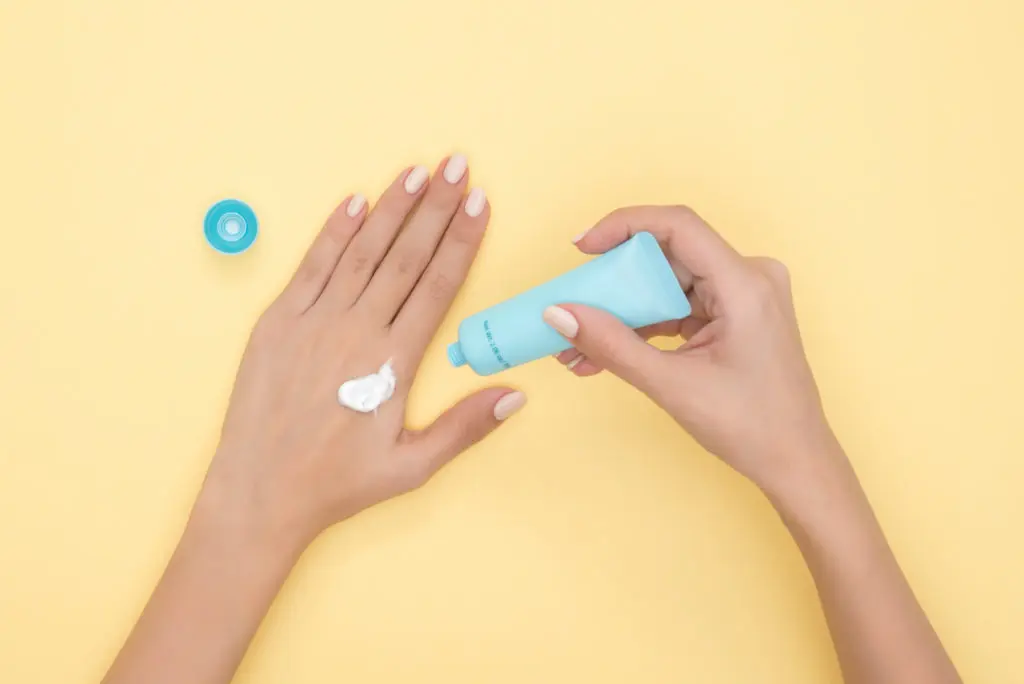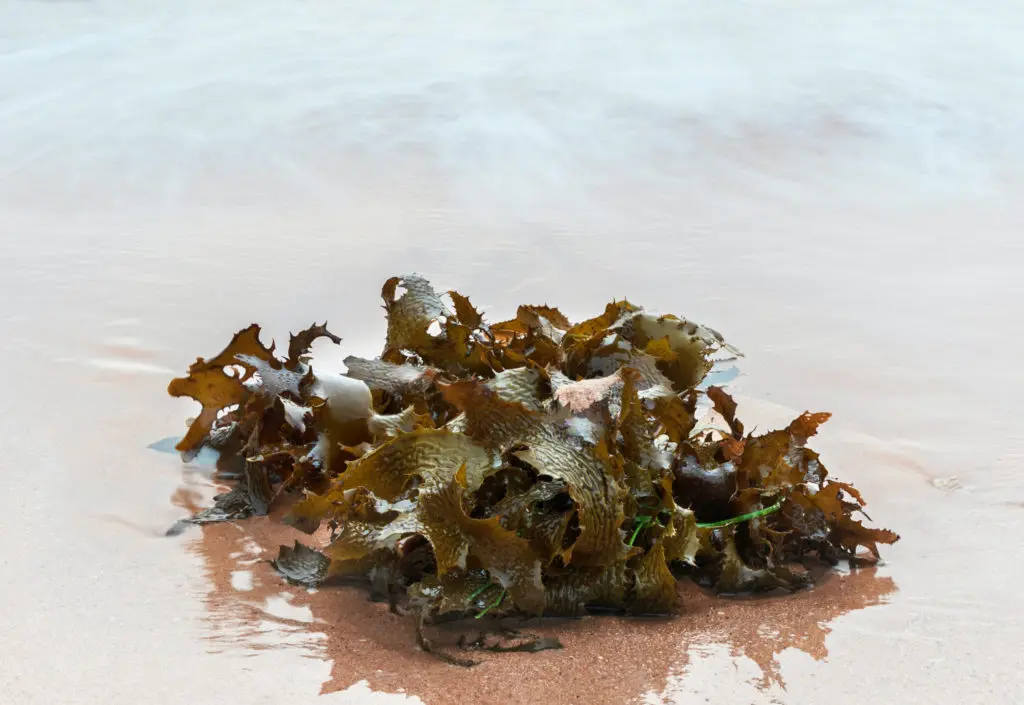
The sun is both a source of life and a threat. In order to benefit from it in the healthiest way possible, appropriate sun protection is necessary. Nowadays, almost everyone is aware that proper clothing and sunscreen application can play a preventive role in curbing skin cancer and slowing down the ageing process of the skin.
What is the demand for such natural products?
The demand for sunscreen is constant, as it is a product that is already well established and is bought anew every summer and holiday season. The trend in Germany shows a growth of about 0.2% per year (source: Statista), and a total turnover of about 218.3 million euros in 2019.
So it is a slowly growing market, which is already mature in many respects. However, it is important to note that the functionality of sunscreen is also increasingly being integrated into other skin care products. It is not uncommon to find sun-protective ingredients in moisturisers, which in turn increases the market size for such ingredients. The demand is growing slowly but steadily.
How does the sun actually affect the skin? And what types of sunscreens are there? What possibilities are there for the development of natural algae sunscreen and skin care products?
What types of UV are there?

Generally, there are three types of ultraviolet (UV) radiation produced by the sun: UV-A, UV-B and UV-C.
The different forms can also be distinguished by their hazard potential. UV-C does not make it through the earth’s atmosphere and therefore has no effect on our skin. UV-A and UV-B, on the other hand, can penetrate the skin and cause damage on and in it.
UV-B radiation is generally considered the more harmful type of UV radiation, and can penetrate the epidermis, the outermost layer of our skin. The consequences are sunburns, but also the risk of developing cancer.
However, it should not be underestimated that UV-A is also harmful and can penetrate deeper into the different layers of the skin. There is basically more UV-A radiation than UV-B, which is why it is especially important not to ignore it. UV-A plays a major role in the ageing process of the skin and can accelerate it.
What does sun exposure do to the skin?
In a study published in 2019 in the “Journal of the Mechanical Behavior of Biomedical Materials”, new insights into the harmful effects of UV radiation on the skin were shared.
The discovery made in the study by Zachary W. Lipsky and Guy K. German is that UV radiation affects the proteins in the corneodesmosomes and weakens the binding of the cells in the stratum corneum (the outermost layer of the epidermis). This is why the skin often peels after a sunburn, as the binding of the cells is no longer intact, and they become detached. This causes damage to the integrity of the skin that cannot be repaired by the body over a long period of time.
UV radiation is an „complete“ carcinogen, which means that it is capable of causing and producing cancer or tumours, and at the same time has a cancer-promoting effect. It is therefore essential to protect oneself as often and thoroughly as possible from too much exposure to the sun.
How does a lack of sun protection of the skin make itself apparent?
Probably the best known reaction to too intense and prolonged contact with the sun is sunburn. This is triggered, as mentioned in the previous section, by the sun damaging the integrity of the structure of our skin through UV radiation.
However, there are also more subtle consequences of too much exposure to the sun, which can only be seen after years or even decades. In this case, the skin shows an accelerated ageing process in the form of wrinkles and age spots.
In extreme cases, years of negligent exposure to the sun can lead to the development of skin cancer. This is of course the worst case, but it is unfortunately also a fact that skin cancer is the most common form of cancer in Germany (source: Robert Koch-Institut, 2017: Krebs in Deutschland für 2013/2014), and UV radiation is one of the most important risk factors.
What can be done to protect the skin against too much sun exposure?
First and foremost, there are two ways to protect yourself from too much sun exposure: you can avoid the sun, or you can actively try to reduce its influence.
When avoiding the sun, you logically remove yourself from its influence by staying in the shade, for example indoors or under a parasol or similar. A common fallacy is that a cloudy sky also offers protection. You don’t feel the heat of the sun, but clouds don’t form a good barrier to UV rays, which reach us anyway.
Another obvious option is clothing. This forms another protective cover between the skin and the outside world, but is not always desirable or beneficial when you are in the water, for example.
When it comes to sunscreens, which are applied in the form of creams, there are two different methods of achieving protection from the sun’s UV rays.
On the one hand, there are mineral-based sunscreens (mostly zinc oxide or titanium dioxide) which ensure that the UV rays are reflected and thus do not reach the skin. These are characterised by their compatibility and do not cause allergic reactions. They also decompose and therefore have no long-term effect on the environment and especially the water.
On the other hand, there are organic sunscreens. In this case, organic does not necessarily mean that the substances are of natural origin. It only means that it is an organic compound, which in most cases, however, are produced industrially with chemical processes. These substances absorb UV radiation and convert the energy into heat so that it does not reach the skin.
The advantage is that these organic substances are easier to apply than mineral sunscreens. However, they can also cause allergic reactions, and some of the substances can have a negative impact on the aquatic ecosystem.
In all cases, it is important to ensure that the time spent in the blazing sun is not too excessive. Even the best sunscreens are only partially effective if the exposure to the sun is not adequate.
What should one look for in sunscreen products?
Various chemical ingredients in sunscreens can be toxic. Too long storage and/or the influence of high temperatures in summer can lead to the formation of dangerous substances in the sunscreen. Therefore, it is important to buy new sunscreen every season, even if the old one still looks and smells good.
Consumers often want the sunscreen to not leave a white “haze” on the skin. Since this is often the case with mineral sunscreens, which reflect the sun based on the layer, these are reduced to nano size in some sunscreens. However, it is not yet clear whether these nanoparticles can penetrate the skin barrier and whether/how they affect the body. So if you want to be on the safe side, take the layer of sunscreen and do without the nanoparticles.
As already mentioned at the beginning, not only UV-B plays a role, but also UV-A. Therefore, it is important that this spectrum is also covered by the sunscreen. So make sure that both criteria are met.
The organic substance oxybenzone has come under increasing scrutiny and criticism in recent years. It has a harmful effect on the human body and the environment. Oxybenzone is not the only substance that is questionable; new studies on chemical substances are constantly being published that question the compatibility of already established substances. Therefore, it is important to inform yourself thoroughly before buying and using a product.
For these reasons, more and more consumers and producers are rightly opting for mineral sunscreens. Organic substances from algae can play a complementary role in additionally benefiting the skin.
Algae Sunscreen – The Natural Sunscreen Options

Which algae can be considered and why?
To understand why algae are a relevant source of organic substances that can support sun protection and enable the production of algae sunscreen, it is worth taking a look at their habitat. Algae, like all plants, need light, and are often exposed to it in water without shady shrub and tree layers as on land.
Although the water filters some of the UV radiation, a substantial part of the radiation still penetrates and reaches the algae. Because of these influences, the algae have had to acquire “defence mechanisms” over millions of years and develop substances that allow them to survive in these harsh ecosystems.
As a result, many macroalgae (also known as seaweed) are suitable sources of supplementary organic substances that can be integrated into algae sunscreen products. These include, for example, the already commercially used macroalgae genera Porphyra (Nori), Fucus and Undaria (Wakame).
Which substances do they contain that are relevant for algae sunscreen?
Algae offer several substances, including fucoidan and MAAs (Mycosporine like Amino Acids) which are photoprotective. They offer additional natural organic substances that can be included in the formulation of mineral sunscreens to supplement them with further protection factors.
What is particularly interesting is that these substances are often especially effective against UV-A radiation. Since this type of UV radiation was often neglected in the past, substances derived from algae are an innovative addition to conventional formulations.
Of course, substances from algae can also play a role in the formulation of purely organic sunscreens. However, since only mineral sunscreens can be used for certified natural cosmetics, it would make sense to expand these products with other natural ingredients from algae.
How else can algae sunscreen and other skin care products have a positive effect?
In addition to their supportive functions as organic sunscreens, the said macroalgae offer several other aspects that are suitable for skin care products. Among these would be their properties that benefit the skin’s moisture regulation. But also antioxidants are widespread ingredients of algae, which protect the skin and the body from external influences and free radicals.
If you would like to learn more about algae as a moisturiser, you can find more information in our blog “Algae Skin Care – Algae in Skin Moisturizing Products“.
Algae Sunscreen – Innovative Opportunities for Product Development

The sun is essential for life on earth and brings us joy, but as with almost all good things, moderation is crucial. That is why it is important to protect ourselves from too much or too extreme an influence of UV rays. Proper sun protection is important for our bodies and our environment.
Although algae cannot completely replace conventional organic substances, they offer an excellent additional source of natural substances. These provide complementary protection from the sun, and at the same time algae sunscreen they protect the environment. At Alganex, we are happy to advise you on new developments so that you can find the right algae for your product.
Sources
Umsatz im Segment Sonnencreme in Deutschland
What is the difference between UVA and UVB rays?
Ultraviolet light degrades the mechanical and structural properties of human stratum corneum
What does sun exposure do to your skin?
Krebs in Deutschland für 2013/2014
How Does Sunscreen Protect You?
UV-Filter in Sonnencremes: Welche sind wirklich gut?
Oxybenzon: Deshalb ist der Stoff in Sonnencremes gefährlich
Anti-Photoaging and Potential Skin Health Benefits of Seaweeds







Comments by Pit Wagner